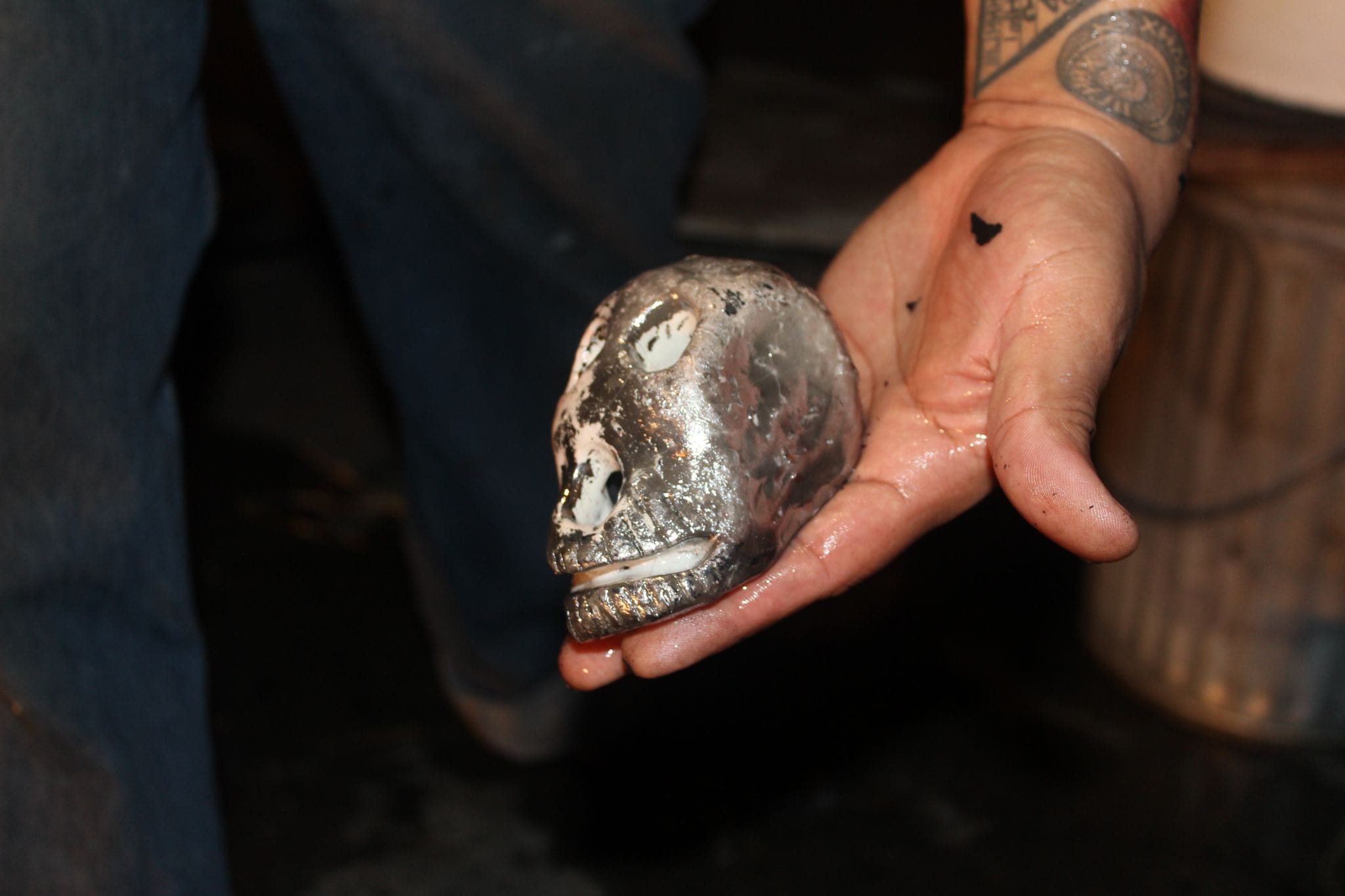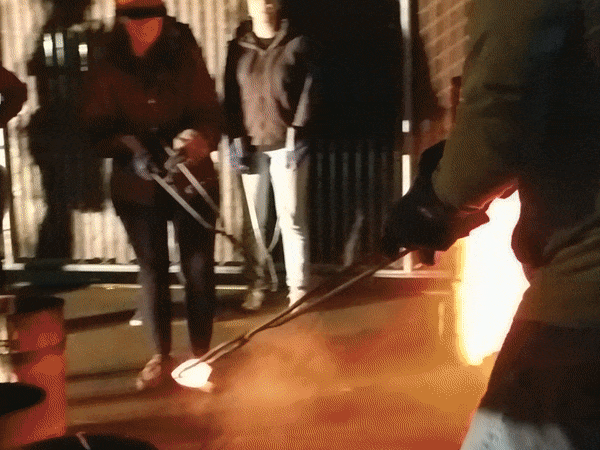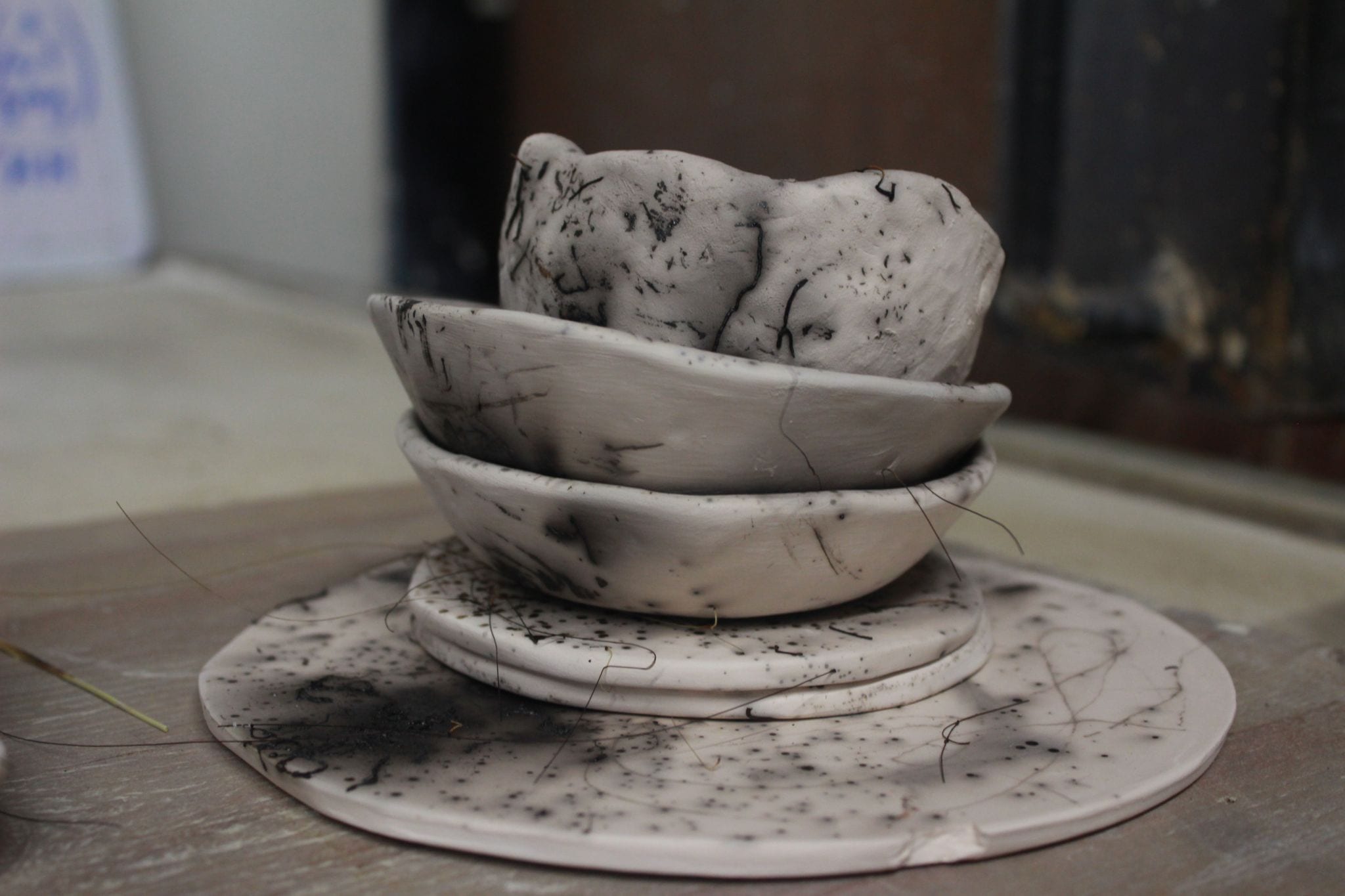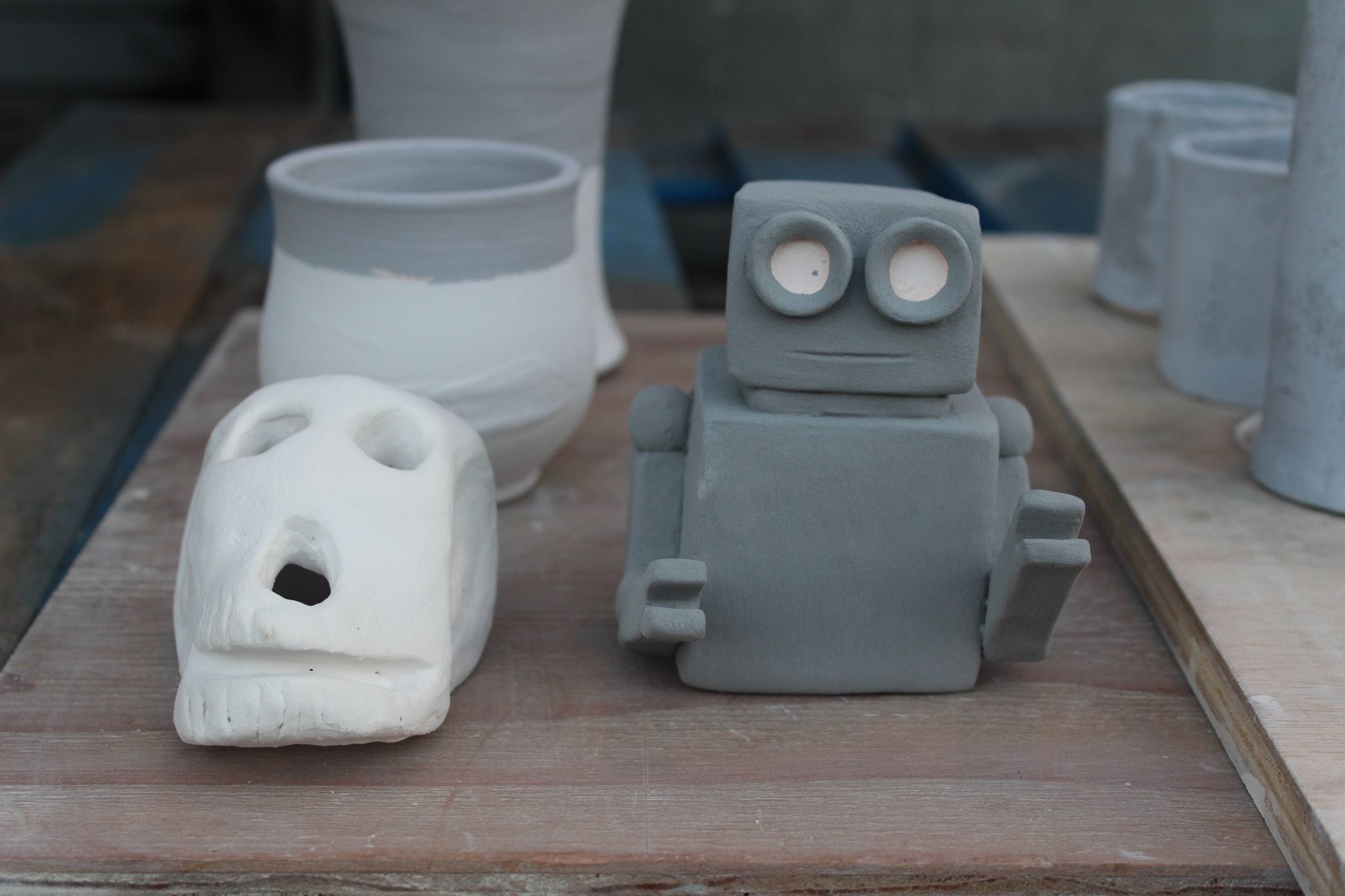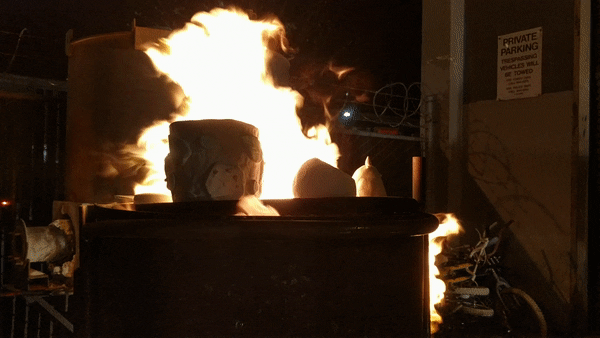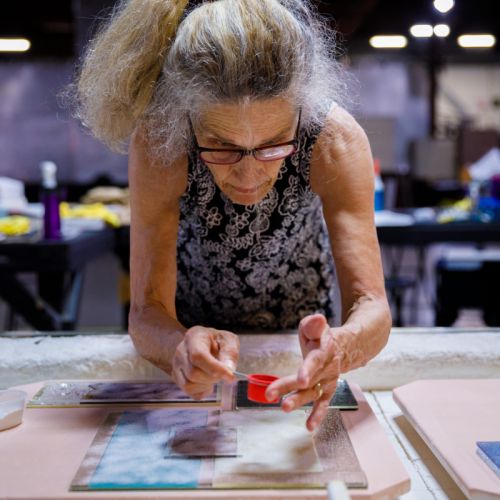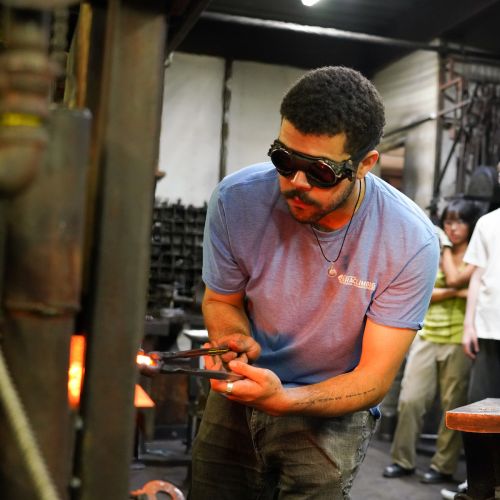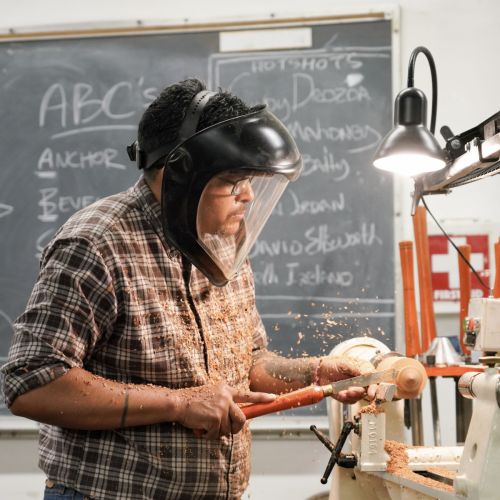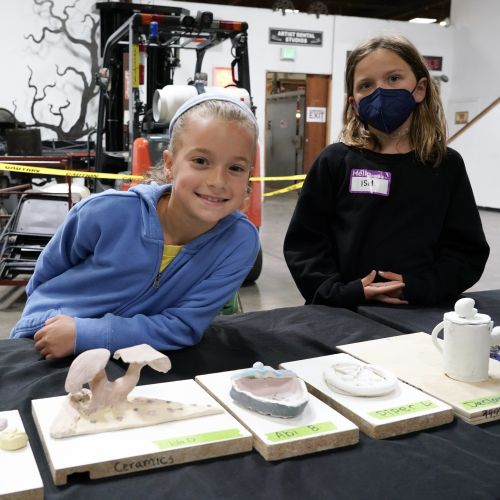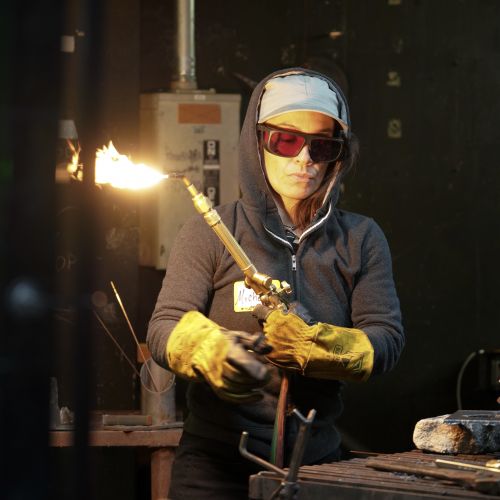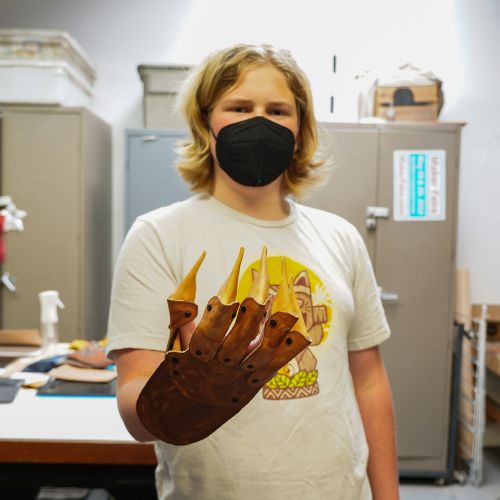by Natasha von Kaenel
The ten students in our Thursday night class rush to paint the last splashes of glaze on their final pots and clay sculptures, while instructor and Ceramics department head, Holly Coley stays busy downstairs, preparing the kiln for the two raku firings of the night.
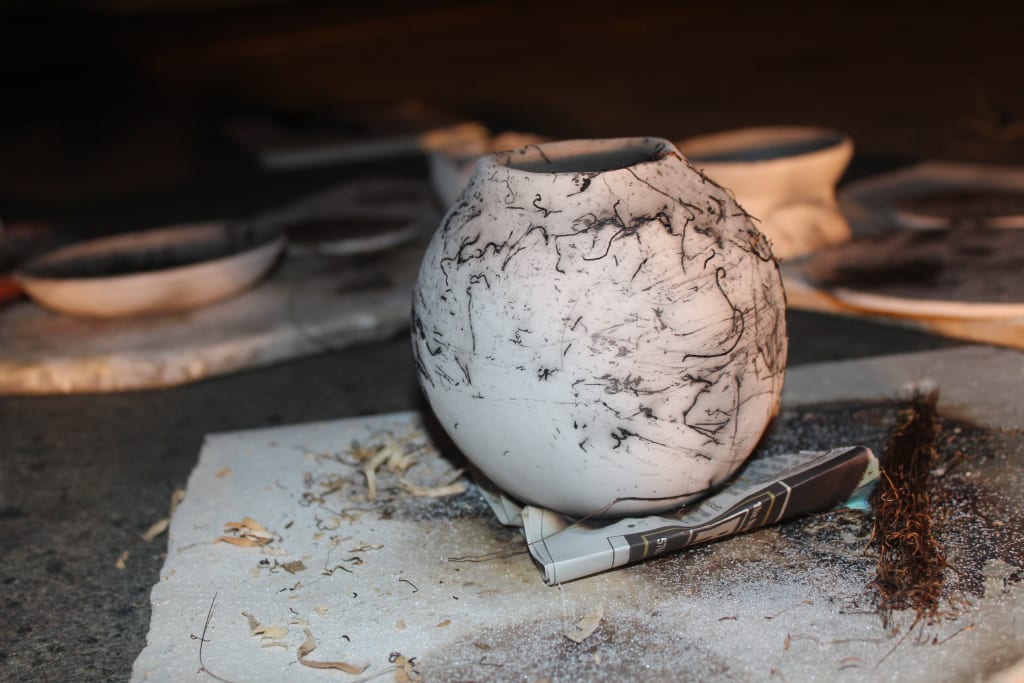
Blake, a first time Ceramics student at The Crucible, used horse hair and sugar to blacken and decorate this small vase.
The first will be horse hair raku, a technique originally discovered by the Native American Navajos. Legend has it that a Pueblo potter’s hair accidentally made contact with a hot pot as it was coming out of the kiln. Excited by the interesting design, the woman began experimenting, pressing straw, pine needles, feathers, and horse hair onto red hot pots.
“It’s a beautiful, very minimal way to decorate the surface of ceramics pieces,” Coley explains.
When the pots are ready, Coley removes them from the kiln, and students jump to quickly decorate their pieces before they cool. One student throws sugar on his pot, gasping as the granular pieces of sugar immediately burst into flame. Another carefully places a long black strand of thick horse hair on his white curved vessel, watching it sizzle and blacken the white clay body.
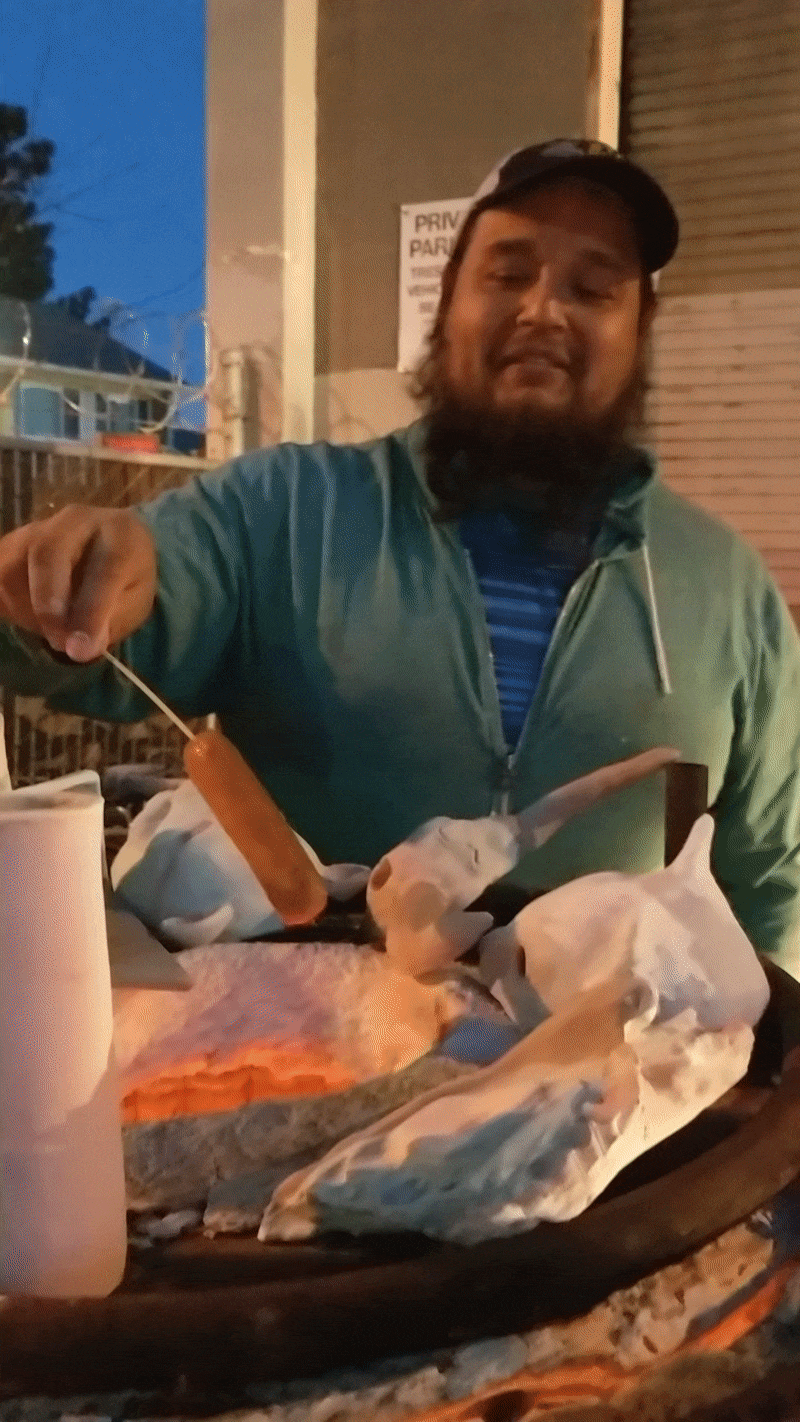
Students and faculty waited for the pots to finish firing, passing the time by roasting hot dogs over the open flames.
Coley says the best way to learn about the history of ceramics and the many different techniques is hands-on exploration. This project-based approach means each student can advance at their own pace, immediately applying the techniques and skills learned in the course to their personally designed, hand-built ceramic sculptures and creations.
Ceramics students finish decorating their work, and wait for the next set of pots to finish firing, passing the time by roasting hot dogs over the escaping flames from the kiln.
The next firing is the more popular American raku. Here, pots are placed in the kiln for about 35 minutes until they reach an insane temperature of 1400°F. The work is then placed in a small container of combustible materials and covered to reduce the amount of oxygen during firing.
Coley’s hand-built fish is just about done with its raku firing. With a long pair of tongs, she pulls it out of the metal trashcan, letting small pieces of charred newspaper fall to the ground. “You can see the pearlescent shimmer it has,” she says, closely examining her newly fired fish. “It’s shining like a jewel.”
Raku firings, or firings in high reduction environments, are one of the only ways to get vibrant, sparkling colors in glaze ware. Raku glazes are rich in metal particles, which get pulled to the surface in hot, oxygen-deprived environments.
Looking closer at her fish’s bulging eyes, Coley laughs, “He does look kind of drunk though. He will look better once we take him upstairs and scrub all the soot off.”
And that he did. See the cleaned-up fish below, and more from this Ceramics I finale firing.


